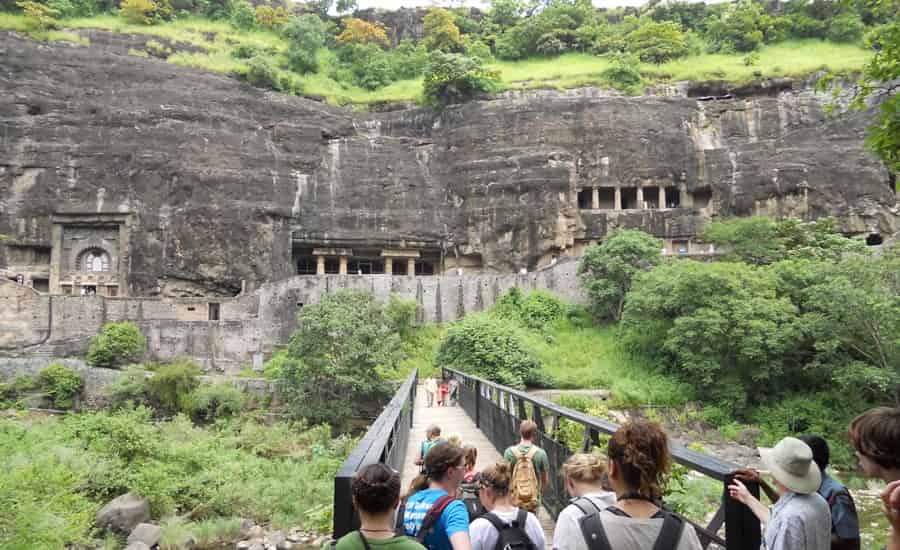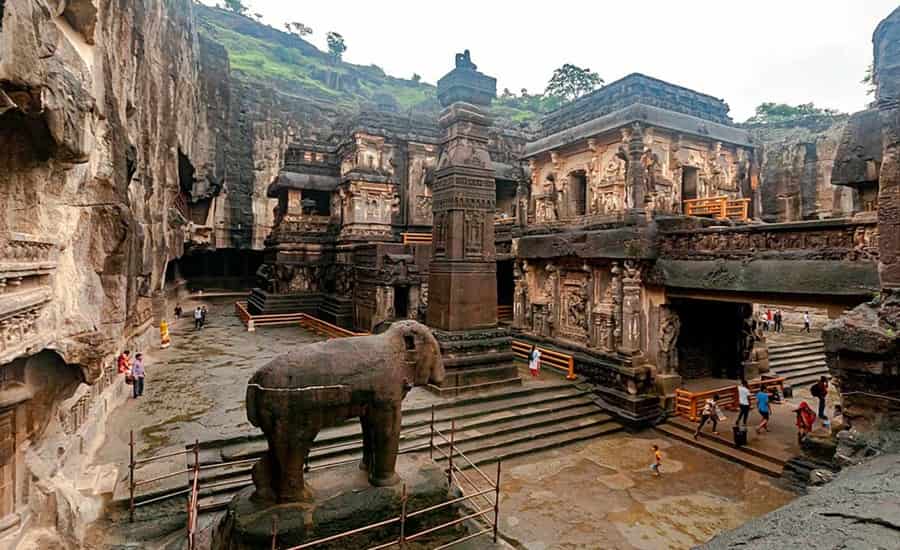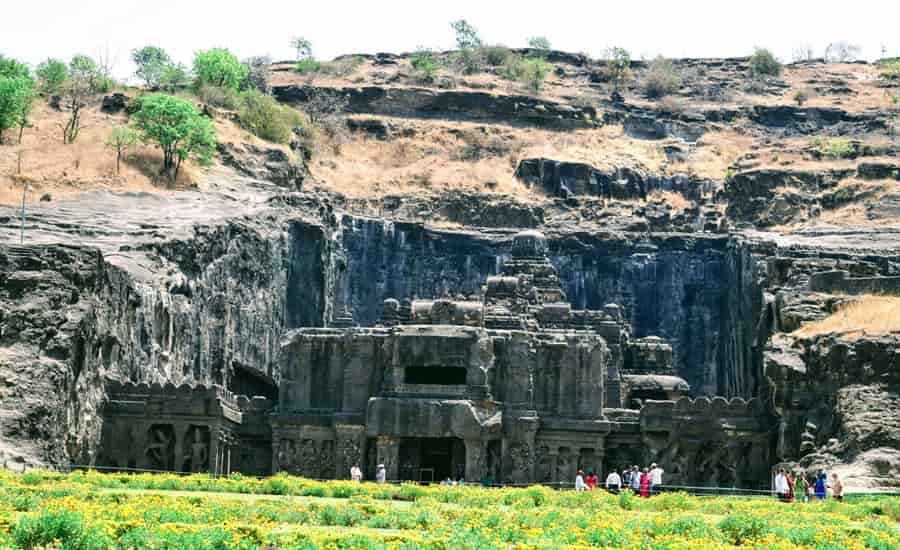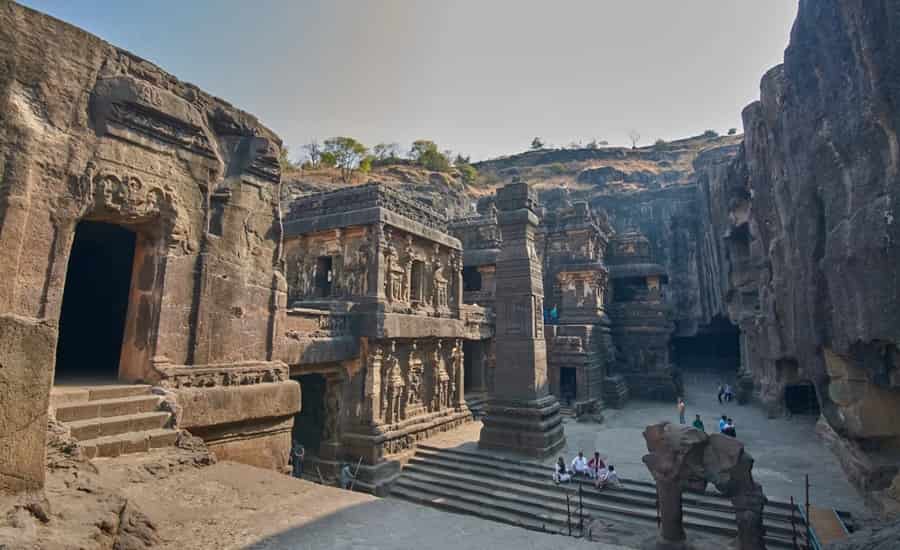Nestled in the heart of Maharashtra, India, the Ellora Caves stand as a testament to the rich cultural and architectural heritage of the country. This UNESCO World Heritage Site is renowned for its rock-cut caves that showcase a harmonious blend…
Ellora Caves
- Address: Near Jalgaon, Aurangabad, Maharashtra, 431117, India
- UNESCO World Heritage Site: The Ellora Caves were designated as a UNESCO World Heritage Site in 1983.
- Time Period: Constructed over a span of five centuries, from the 6th to 10th centuries AD.
- Rock-cut Architecture: The caves showcase an impressive display of rock-cut architecture, featuring intricate carvings and sculptures.
- Three Major Groups: Ellora is divided into three major groups – Buddhist Caves, Hindu Caves, and Jain Caves, representing diverse religious traditions.
- Total Caves: There are a total of 34 caves, each dedicated to different deities and religious themes.
- Kailash Temple: The Kailash Temple in Ellora is particularly renowned, dedicated to Lord Shiva, and is one of the largest monolithic rock-cut temples in the world.
- Integration of Styles: Ellora reflects the integration of various architectural and artistic styles from Hindu, Jain, and Buddhist traditions.
- Notable Sculptures: The caves house remarkable sculptures, including depictions of deities, mythological scenes, and intricate detailing of everyday life.
- Cultural Heritage: Ellora Caves stand as a testament to the rich cultural and religious diversity of ancient India.
- Ajanta Caves Aurangabad Entrance Fees:
- ₹10 per person for Indian visitors
- ₹250 per person for foreign tourists
- ₹25 for the use of Still/Video Camera
- No entry fee for children below 15 years of age.
- Timings:
- Monday: Closed/Holiday
- Tuesday to Sunday: 9:00 am – 5:00 pm
Ellora Caves, located in the Indian state of Maharashtra, represent a remarkable testament to the country’s rich cultural and architectural heritage. These ancient caves, designated as a UNESCO World Heritage Site, date back to the 6th century and span a period of nearly 600 years. The Ellora complex comprises a total of 34 caves, showcasing a unique blend of Buddhist, Hindu, and Jain rock-cut temples. What distinguishes Ellora from other cave sites is its inclusive representation of diverse religious traditions in close proximity, making it a symbol of religious harmony and artistic mastery.
The caves at Ellora are categorized into three main groups – the Buddhist caves, Hindu caves, and Jain caves. The Buddhist caves, numbering from 1 to 12, primarily date from the 5th to the 7th centuries and feature intricately carved sculptures and paintings depicting the life of Buddha. The Hindu caves (13 to 29) were constructed between the 7th and 10th centuries, showcasing magnificent temples dedicated to various deities, with the Kailash Temple being the most famous. Lastly, the Jain caves (30 to 34) were built around the 9th and 10th centuries and portray the teachings of Jainism through impressive sculptures and carvings. The Ellora Caves stand as a testament to the artistic and religious diversity that has shaped India’s cultural landscape over centuries.
Beyond their religious and historical significance, the Ellora Caves are a masterpiece of ancient rock-cut architecture. The monolithic structures, meticulously carved out of solid rock, highlight the exceptional skill and craftsmanship of the artisans of that era. The Kailash Temple, in particular, is an awe-inspiring example of the architectural prowess, as it represents Mount Kailash, the abode of Lord Shiva, and is considered one of the largest monolithic structures in the world. Ellora Caves continue to attract visitors and scholars alike, offering a captivating journey through India’s past and its rich artistic traditions.
How to Reach Ellora Caves
The Ellora Caves, a UNESCO World Heritage Site in Maharashtra, India, are renowned for their ancient rock-cut architecture and religious significance. Travelers have multiple options to reach Ellora Caves, including flights, trains, buses, and taxis. In this comprehensive guide, we…
Best Time to Visit Ellora Caves
Nestled in the heart of Maharashtra, India, the Ellora Caves stand as a testament to the rich cultural and architectural heritage of the region. Carved into the Charanandri hills, these caves showcase a remarkable blend of Hindu, Jain, and Buddhist…
History of Ellora Caves
Ellora Caves, located in the Indian state of Maharashtra, stand as a testament to the rich cultural and religious tapestry of ancient India. Carved into the Charanandri Hills near the village of Ellora, these caves represent an extraordinary blend of…





 Call
Call Enquiry
Enquiry